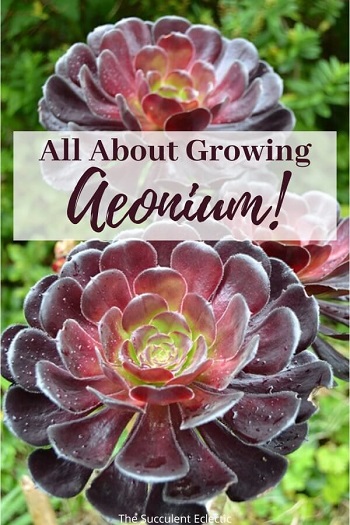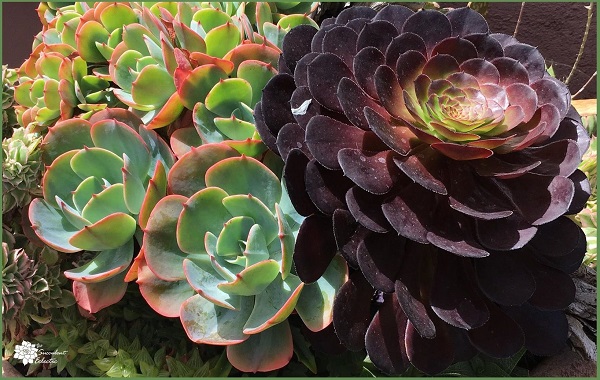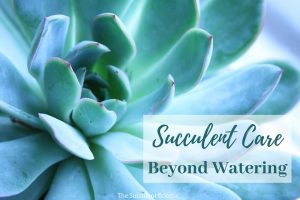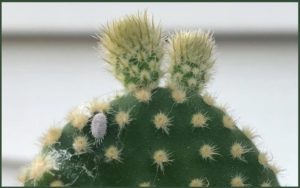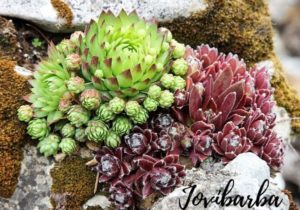Aeonium (Ay-OH-nee-um) is a genus of about 35 rosette succulents, native to the Canary Islands, Morocco and East Africa. The name comes from the Greek word “aionos” meaning ageless. In my mind, I always think of these beauties as ageless roses. Like echeveria and sempervivum, they produce leaves arranged in concentric circles – around a common center. This gives them the appearance of a rose. Unlike these two, aeonium rosettes are formed on ever-lengthening, curving, woody stems. Aeonium care is a snap, especially in mild climates, though they can be over-wintered indoors. Let’s take a closer look at these flower-like plants.
All About Growing Aeonium
In this Post We'll Cover:
{Please note, some links in this post may be affiliate links to sites that pay me a small commission if you click on the link and make a purchase. This commission is at absolutely no cost to you. I only recommend products and companies that I have worked with and truly love! ~Kat}
Aeonium – Tree Houseleeks
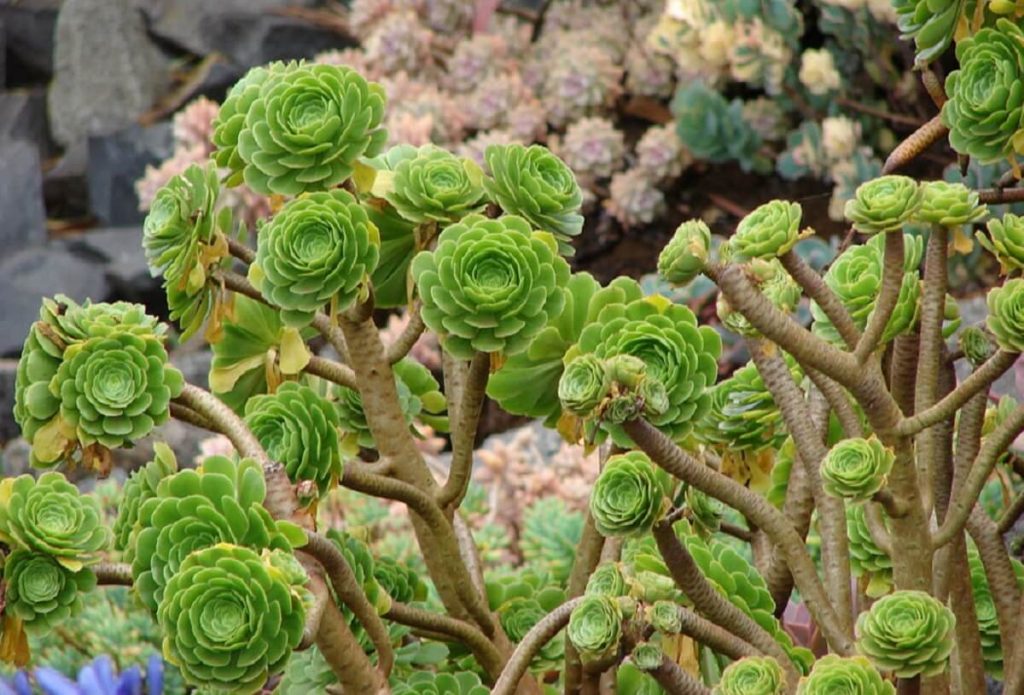
Aeonium are commonly referred to as tree houseleeks. The “houseleek” refers to its resemblance to sempervivum. The tree part is due to the long and branching trunks forms by the woody stems. New growth emerges from the center of the rosette. Older leaves are sloughed off, from the ever-elongating stem. Some varieties form extremely long, tall stems, reaching four feet or more, with rosettes the size of dinner plates. Others have a more compact form, branching nicely, with smaller rosettes. The coloring is typically green, sometimes accented with cream, rose or pink in variegation. Some varieties produce striking rosettes in red so deep that it appears black.
Aeonium rosettes often look so utterly perfect, they do not seem real. If you cannot help touching the plant to be sure, feel free. There are no spikes or spines to be wary of. But do take care when handling the plant, The leaves are easily marked, though the damage does not show up for a day or so.
Aeonium – Rosette Succulents
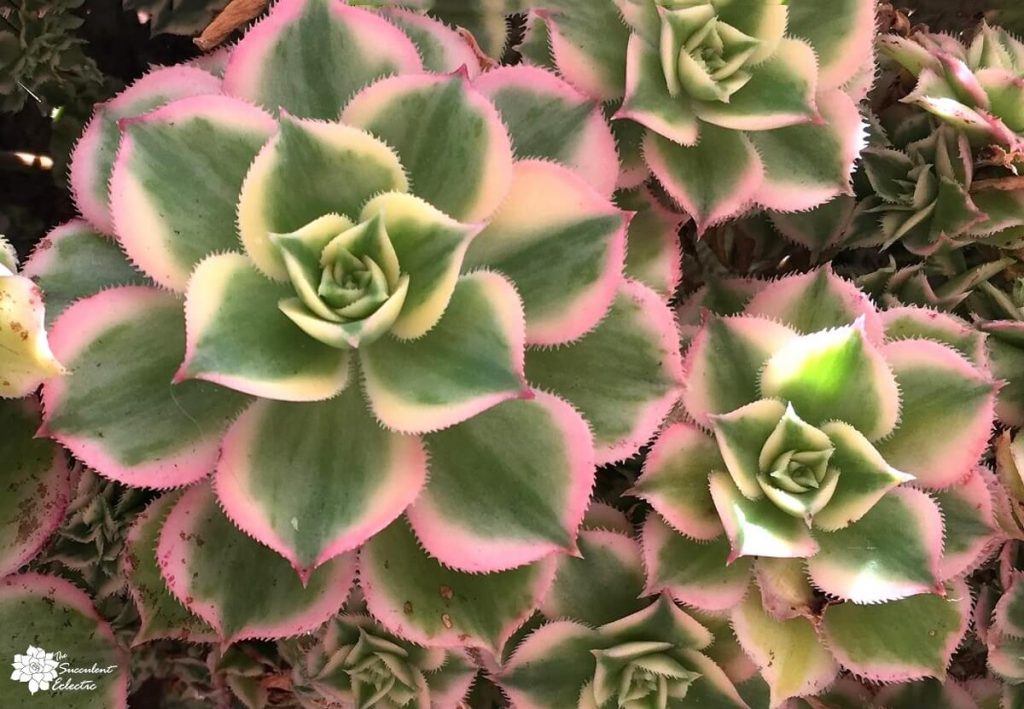
The flower-like rosettes of aeonium tinged with pink and yellow make for a beautiful, floral note in your succulent garden. They are long-lasting and lovely, whether you grow them in a container or in the ground. Just as in a bouquet of flowers, the rosette succulents look their best planted with others that contrast and compliment their form and color. Slim, vertical or trialing succulents like crassula, portulacaria or senecio look wonderful with aeonium.
I have a blog post and infographic devoted to recognizing the differences between rosettes succulent varieties.
Aeonium Hardiness
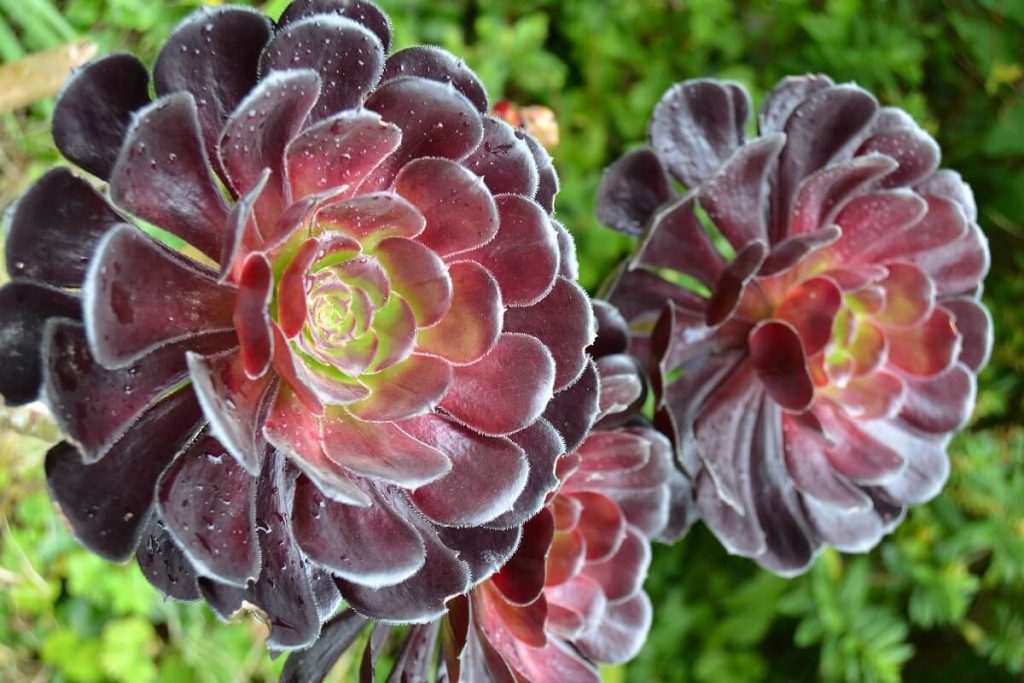
Aeonium are generally hardy to USDA climate zones 9-11. They can typically withstand a light frost and are actively growing in the winter months when cooler weather and moisture are more prevalent. They will go dormant in the hottest summers. This is not the best choice of succulent for fiercely hot regions. If you have your aeonium in full sun while temps are fierce, and the leaves begin to curl, withhold water. The curling leaves are a sign the plant has shut down many of its normal systems in an effort to conserve water. When the return of more moderate temperatures, you will see the leaves open again. This is the time to resume your regular watering.
Aeonium Care
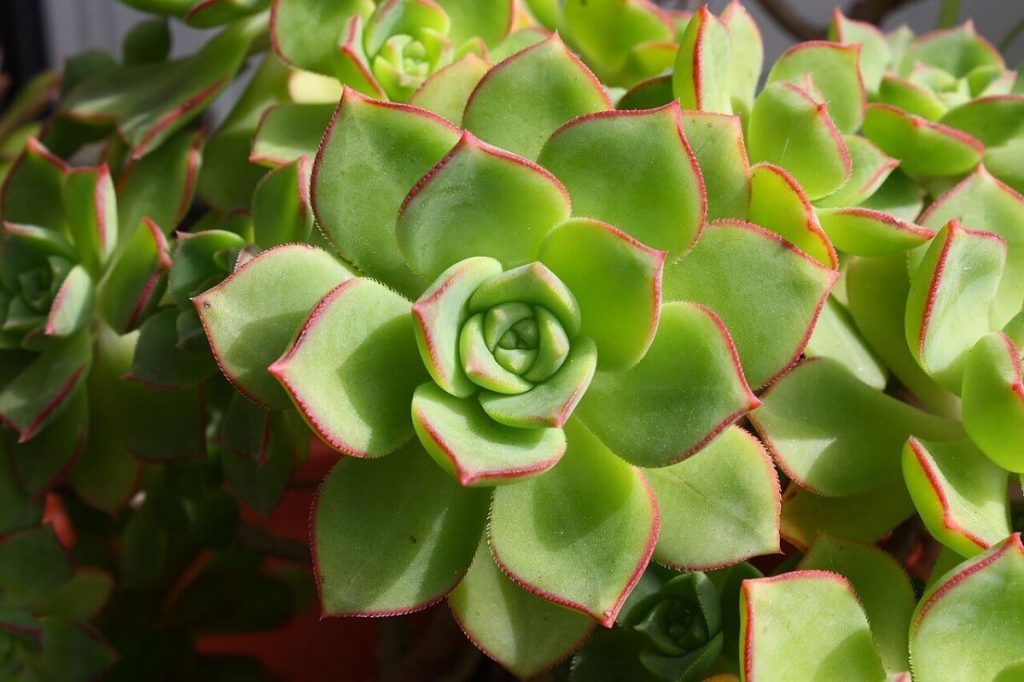
Even more than most succulents, aeonium thrive on benign neglect. Ideally, they prefer to be protected from extremes of temperature and sun exposure.
Aeonium Sun Exposure
While aeonium tolerate a fair range from full sun to partial shade, bright light typically brings out the best coloring in their leaves. Full sun in the hottest regions will burn an aeonium’s leaves.
Watering Aeonium
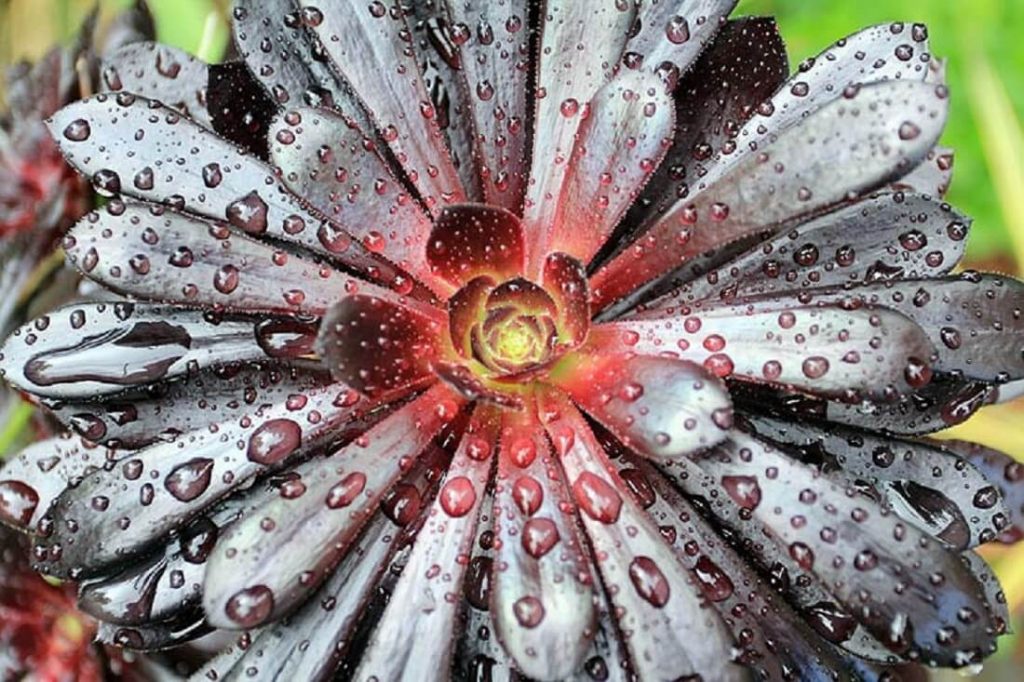
Like all succulents, aeonium store water for the plant’s future use, as an adaptation to growing in very dry climates. As always, proper watering for these succulent plants is crucial. Be sure to plant your aeonium in a fast draining, gritty succulent soil. Then, water only when the soil is dry. Let the plant make full use of the water provided before adding more water to the soil. If you are gardening in a coastal region or one with a lot of dew or fog, you may find your plant seldom needs irrigation.
Color Changing Aeonium
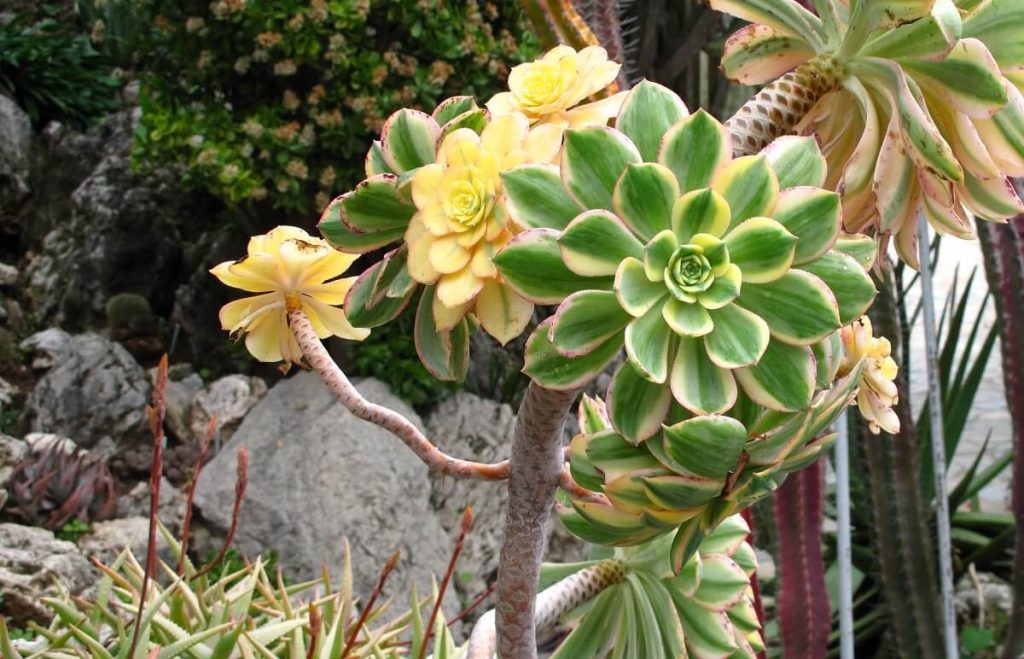
The green rosette above with yellow markings, and those that are predominantly yellow with just a few hints of green, are from the same plant. Aeonium change color throughout the year, or even on a single plant in response to light, temperature and hormone cues. In general, more sun, and more heat, often combined with a bit less water tends to bring out the most dazzling color in your aeonium. These forms of physical stress bring our vivid coloring in your succulents.
Aeonium Flowers
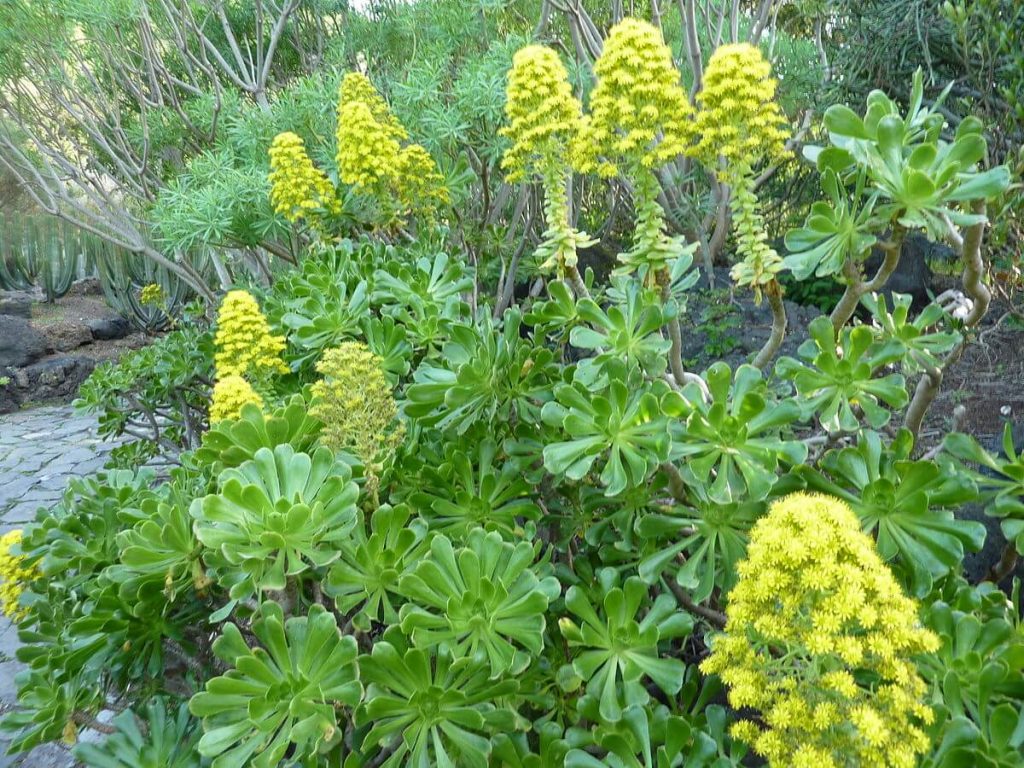
Aeonium flowers are spectacular and last for weeks at a time. Like sempervivum, aeonium
Aeonium Propagation
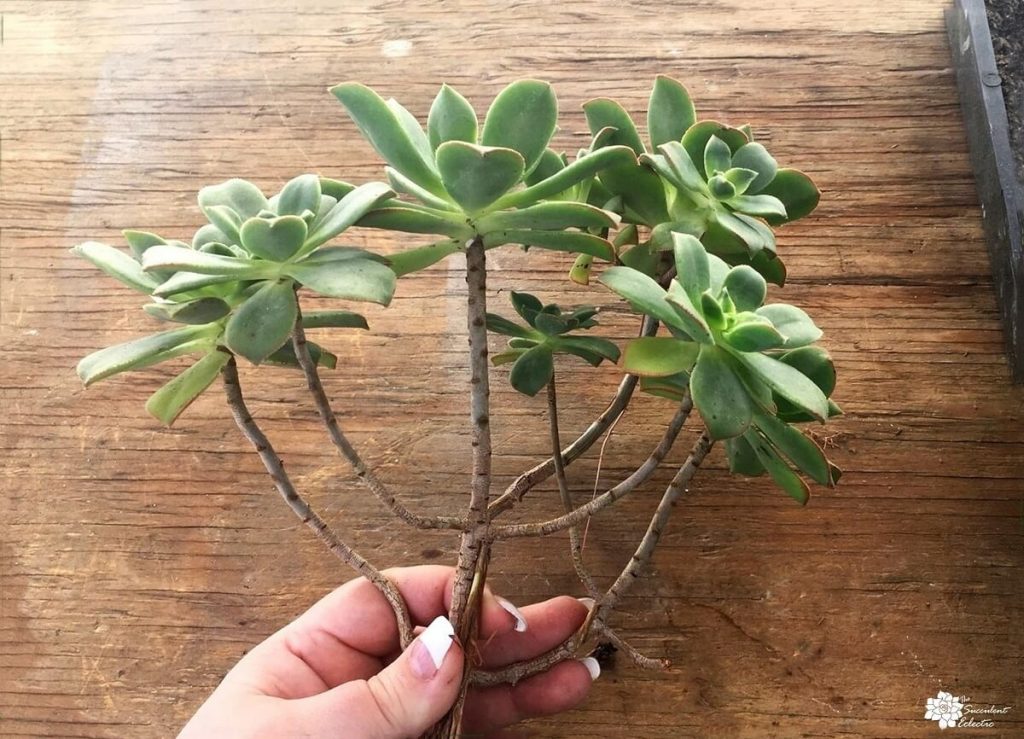
Aeonium propagation is best done by stem cuttings. Do you see the spots on the stems in the photo above? Each is the point where a leaf had grown and was then discarded as the plant grew. Each node where a leaf once grew will develop roots if the stem breaks and drops to the earth. This is how the plants propagate themselves in nature. A branch may break under the weight of a large rosette. Where it then touches the ground, it roots and grows a whole new plant.
Aeonium are very difficult to propagate by a single leaf. The easiest method is by stem cuttings. Slip the bottom two inches of the bare stem into dry succulent soil, out of direct sun. The cut stem will callous while in the dry soil. Leave the cuttings dry for 2 weeks. Then, gently lift each cutting. If it comes out of the soil easily, replace it and wait another 2 weeks. If the cutting resists your lifting, it has begun to root! Now, water lightly and allow the soil to dry. You can then slowly acclimate it to more light, and enjoy your new plant!
Aeonium Bruise Easily
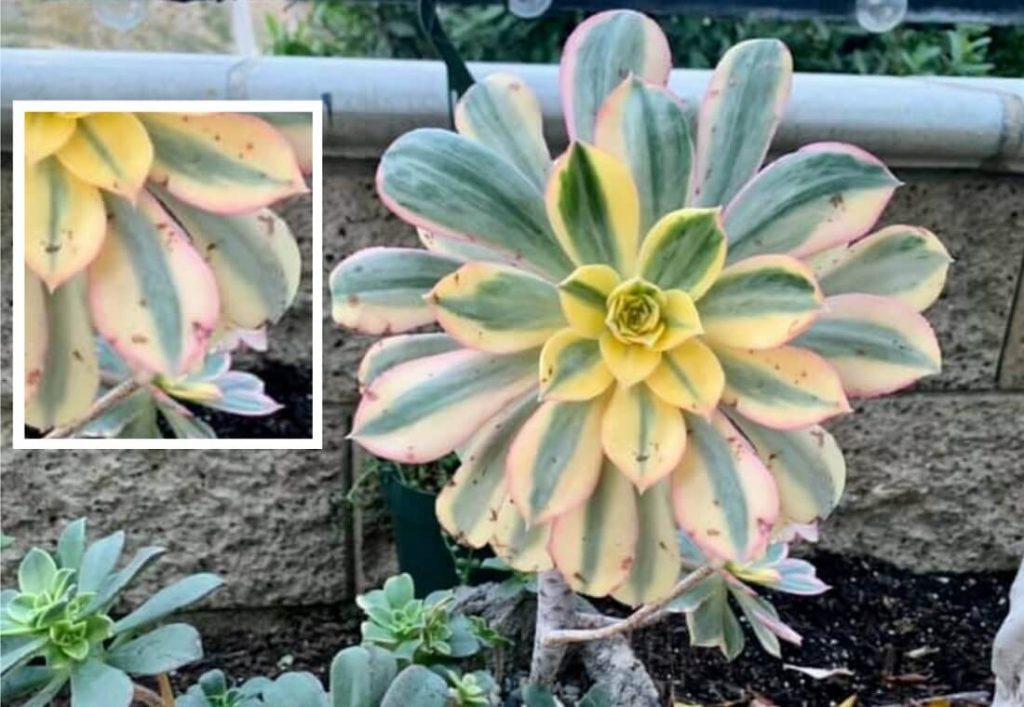
One issue to be aware of when growing the lovely Aeonium — they do bruise easily. Handle the leaves gently when you plant or propagate Aeonium or marks will become apparent within a day or so. If you order a plant online, it will likely arrive looking pretty sorry for itself, possibly sporting dramatic black or brown marks. Even bits of soil, twigs, pumice, etc. carried by the wind will cause bruising, as seen in the photo above*.
These bruises on Aeonium leaves won’t go away, but they do not harm the health of the plant. And in time, the plant will outgrow the foliage that shows these marks. Take care to avoid bruising Aeonium as you can, but don’t let it deter you from growing these beauties.
*Thank you, Lynda Wynn, member of my growing Facebook group, for the use of this photo!
Are Aeonium Toxic to Pets?

Aeonium
This symbol denotes pet-safe succulents. For more information about succulents and pets, just click on the image anywhere on this site.
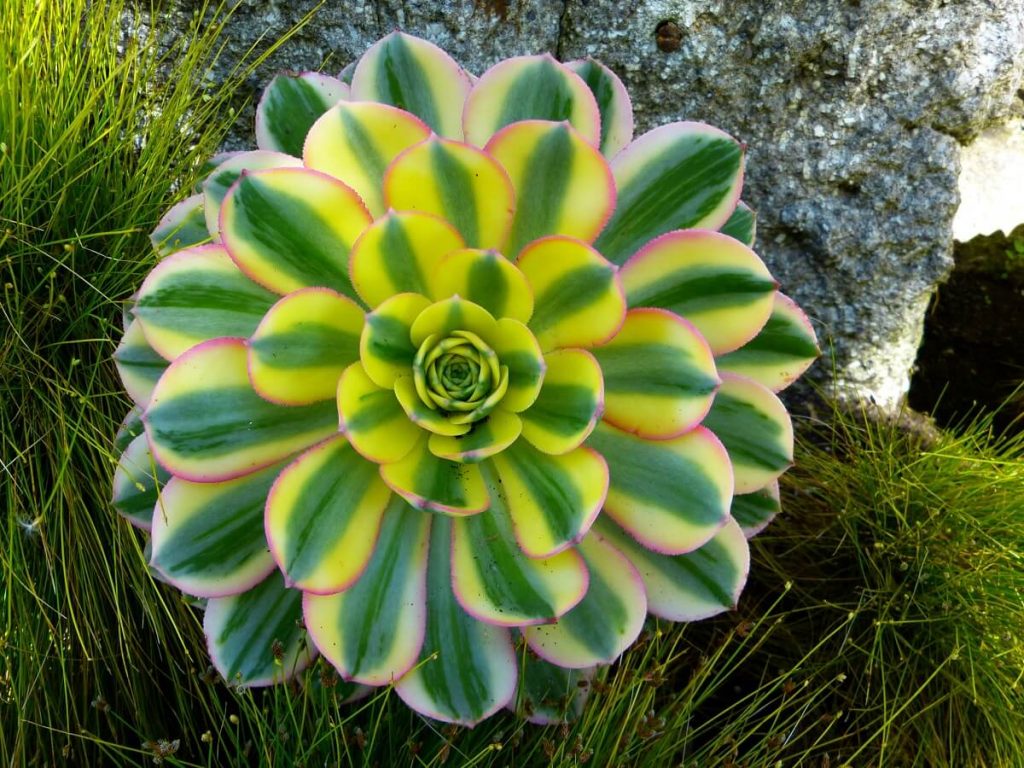
For a beautiful, colorful rosette succulent that is easy to grow, it is hard to beat aeonium! And if you are new to propagating succulents, this is a terrific place to start. You can find aeonium at most home stores and nurseries. I gave you links to a few of my favorite varieties above. Or take a look at varieties offered by Mountain Crest Gardens. Enjoy growing your succulent rosettes!
You can do this!

P.S. For my FREE course, 7 Steps to Succulent Success, please subscribe! Thanks so much!
